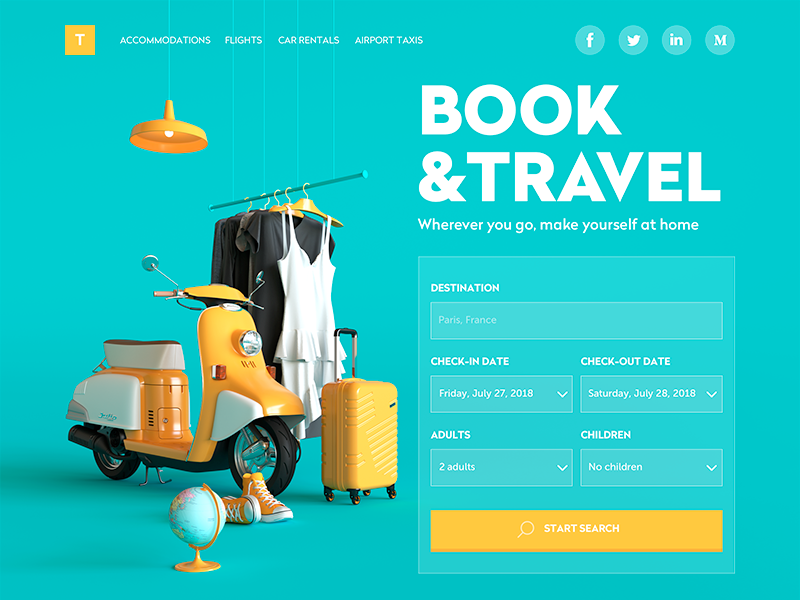Aligned Position Web Design: Building Beautiful and Functional Websites for Your Business
Aligned Position Web Design: Building Beautiful and Functional Websites for Your Business
Blog Article
The Very Best Sorts Of Web Layout to Enhance Customer Experience and Engagement
In the ever-evolving landscape of electronic interaction, the performance of website design considerably influences user experience and interaction. Various style strategies, such as minimalist, receptive, and interactive layouts, each offer one-of-a-kind advantages that can deal with varied individual needs. Recognizing which sorts of Web layout best serve these goals can be pivotal for companies intending to enhance customer fulfillment and retention. The concern stays: which layout elements really resonate with users and foster purposeful engagement? The exploration of these principles exposes critical insights that may redefine your method to Web design.
Minimal Website Design
As electronic landscapes come to be progressively messy, minimalist Web design has emerged as a powerful approach to enhancing customer experience. This layout philosophy focuses on simpleness, concentrating on vital aspects while eliminating unneeded interruptions. By utilizing enough white space, straightforward navigating, and a limited shade combination, minimalist design promotes quality and guides customer interest to essential content.
The core concept of minimalist website design is to create a smooth communication for individuals. By minimizing cognitive load, customers can swiftly grasp info without feeling bewildered. This direct approach not only enhances functionality yet additionally motivates involvement, as visitors are most likely to discover a website that is aesthetically attractive and very easy to navigate.
Additionally, minimal layout typically stresses typography and images, using these components purposefully to convey messages effectively. This concentrate on important components can improve brand name identification and create a memorable customer experience. Essentially, minimal Web style is not simply a pattern; it is a thoughtful technique that acknowledges the relevance of user-centered style. By removing away peripheral elements, designers can produce a much more appealing, efficient, and pleasurable Web experience for all individuals.
Receptive Website Design
In today's diverse digital setting, receptive Web layout has actually come to be necessary for producing a smooth user experience throughout a wide range of devices. As users access internet sites on mobile phones, tablets, desktop computers, and laptop computers, the ability of a site to adapt its layout and content to various display sizes and resolutions is crucial.
Responsive website design employs versatile grids, photos, and CSS media queries to ensure that Web material exists efficiently, regardless of the gadget utilized. This technique not just boosts the aesthetic allure of a website yet additionally considerably enhances use. Individuals are more probable to involve with a site that supplies a consistent experience, as it eliminates the aggravation of needing to focus or scroll exceedingly.
In addition, internet search engine, consisting of Google, prioritize mobile-friendly internet sites in search rankings. By taking on responsive style, services can improve their visibility and get to a wider target market. This approach also simplifies website upkeep, as a single variation of the site can satisfy all gadgets, reducing the need for numerous versions. In recap, responsive website design is an essential method that enhances individual experience, involvement, and overall complete satisfaction.
Interactive Website Design
Responsive Web style prepares for boosting user experience, however interactive website design takes this a step even more by engaging customers in a much more vibrant way - Aligned Position Web Design. By integrating components such as computer animations, clickable models, and real-time feedback, interactive Web style captivates individuals, attracting them into a richer surfing experience
This method not just promotes engagement but additionally encourages individuals to check out material proactively instead of passively eating it. Methods such as gamification, where users make rewards for finishing tasks, can considerably boost the time spent on a site and boost overall contentment. Additionally, interactive attributes can simplify complicated details, making it more pleasurable and digestible.

Integrating interactive style aspects can likewise result in higher conversion rates, as individuals are more likely to engage with a site that proactively includes them. Aligned Position Web Design. Inevitably, interactive website design changes customer experiences right into memorable journeys, making certain that site visitors return time after time
Apartment Design
Defined by its minimalistic technique, flat layout highlights simpleness and capability, stripping away unneeded components and concentrating on essential features. This design ideology focuses on use, making certain that users can browse user interfaces easily and performance. By utilizing a clean visual, flat layout removes the mess usually discovered in more elaborate styles, consequently boosting customer focus on material and performance.
The hallmark of level layout hinges on its use bold shades, basic typography, and geometric forms. These aspects add to an aesthetically enticing user interface that is both contemporary and approachable. In addition, flat design promotes a sense of quality, permitting customers to determine necessary activities and details without diversion.
Additionally, flat design is especially efficient in responsive Web design, as its simplicity converts well across numerous tools and screen dimensions. The lack of complex textures and slopes minimizes packing times, which is important for preserving individual interaction. As digital landscapes continue to advance, flat layout remains a relevant selection for developing straightforward internet sites that enhance overall experience. By focusing on necessary attributes, flat style not just satisfies individual requirements however also motivates seamless interaction, making it a vital part of efficient Web layout strategies.
Flexible Website Design
Adaptive website design personalizes the customer experience by creating multiple repaired formats tailored to various display dimensions and devices. Unlike responsive layout, which fluidly adjusts a single format, flexible style employs distinctive formats for particular breakpoints, making certain optimal presentation on numerous platforms. This method allows developers have a peek at this site to focus on the unique characteristics of each gadget, boosting functionality by providing exactly what customers require based upon their context.
Among the main advantages of adaptive website design is its ability to maximize load times and efficiency. By serving customized content and photos that fit the customer's gadget, websites can decrease information usage and boost loading speeds. This is specifically helpful for individuals with slower links or minimal data plans.

Furthermore, flexible style helps with an extra consistent and controlled branding experience. Since designers develop multiple layouts, they can make sure that the aesthetic aspects straighten with the brand name's identity across various platforms - Aligned Position Web Design. This causes a cohesive individual experience, boosting involvement and advertising individual retention
Final Thought
To conclude, the combination of minimalist, responsive, and interactive website design principles significantly boosts individual experience and involvement. Minimal style cultivates quality and focus, while responsive design guarantees adaptability across numerous gadgets, promoting access. Interactive design astounds individuals through dynamic components, urging expedition and customization. Collectively, these design approaches add to the production of straightforward environments that not just boost fulfillment yet additionally drive higher conversion prices, emphasizing their critical significance in modern Web layout techniques.

Minimalist layout cultivates quality and emphasis, while receptive style ensures flexibility throughout various devices, advertising access. Jointly, these design comes close to contribute to the production of easy to use atmospheres that not only boost contentment but additionally drive higher conversion prices, emphasizing their vital significance in modern Web layout techniques.
Report this page